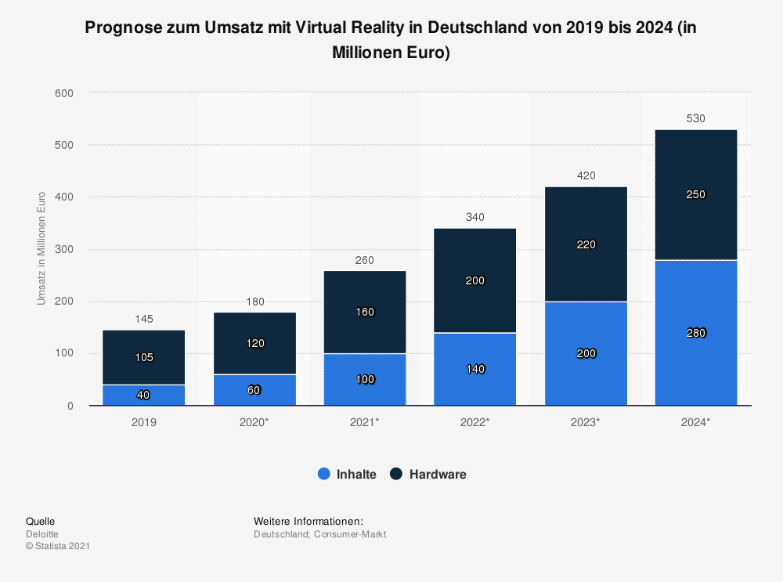
5 Tips for Modern Marketing in the Metaverse
Marketing
Posted 25 Jan 2022
In late 2021, Mark Zuckerberg announced the renaming of his company Facebook to Meta from the end of October. This move marked the first step of many great entrepreneurs and interested parties into the Metaverse.
The Metaverse is an ongoing trend that, by all accounts, will significantly shape the future of how we interact and communicate with each other in our daily lives. For a company to successfully perform their PR and marketing work in the metaverse, it is necessary to have a comprehensive understanding of how this concept works.
The Metaverse is a virtual reality connected to our physical reality. In the future, it will cover all social interactions that take place in the professional and educational spheres. This is also referred to as mixed reality. The metaverse is accessible through different means, amongst others AR and VR technology, the personal computer, smart mobile devices as well as the game console. This newly created virtual space has its own infrastructure, is constantly synchronized, can be accessed by any number of people at the same time and lives of the creativity of its users.
The first examples are the performances of artist Post Malone, who gave a concert in the Pokemon world in 2021, or musician Travis Scott, who gave a concert in the video game Fortnite in 2020 with 12.3 million players being online at that time.
To stand out in the metaverse, companies need more than just a well-worded ad. In a universe without supposed boundaries, innovative marketing is essential to avoid being lost in the crowd of meaninglessness.
Within the near future, advertising can be made tangible, and users can actively interact with it. Through innovative ideas and creative implementations, brand managers can further develop the possibilities of their brand presence and thus achieve even more than they already do.
From most platforms, we only know two-dimensional content in the form of images, text, and graphics. Through AR and VR technologies, three-dimensional graphics, animations and applications are increasingly coming to the fore.
Therefore, content managers and those responsible for a corresponding strategy are well advised to gain initial experience with 3D graphics and try out various content strategies in three-dimensional space.
The demand for virtual reality hardware and content has already massively increased over the recent years and the trend is set to continue. According to a forecast by the auditing firm Deloitte, sales of virtual reality products will rise to 530 million euros by 2024 in Germany alone (see graphic).

Forecast for virtual reality sales in Germany from 2019 to 2024 (in millions of euros)
Events such as digital concerts but also NFTs (non-fungible tokens) can be experienced digitally in the Metaverse through AR and VR.
The digital world offers an increasingly customized online experience through personalization options. Unique avatars can be created on gaming platforms as well as in the social media world. The algorithms used by the respective platforms play out individual posts tailored to the user. It is to be expected that users will be given more and more opportunities to express their personality in the virtual environment. The trend undoubtedly points in the direction of personalization.
With an increase in the individualization of the digital world, classic mass marketing is falling behind. Target group-oriented marketing is gaining importance and efficiency.
You might also be interested in: When advertising becomes personal – Dynamic Ads
In the future, the marketing mix will be expanded to include the strong connectivity of digital and physical reality. AR and VR technologies as well as the use of artificial intelligence will set new standards in marketing strategies. In this context, NFT art also offers a valuable marketing approach for many companies. One example is the German Telekom.
Such campaigns can be creatively linked. To achieve the greatest possible advertising impact, many campaigns run simultaneously online and offline. The resulting synergy effects of both worlds will ultimately be permanently incorporated into everyday life through the metaverse.
The same applies here: creative and innovative ideas are not only nice to look at but, when implemented correctly, are also a clear competitive advantage over competitors and thus support a clear positioning.
As the majority of the existing marketing mix remains highly relevant, the transition into the metaverse does not fundamentally reshuffle the cards. It does offer profitable potential for collaborations with emerging stars and influencers, though. Taking examples such as the musicians Post Malone and Travis Scott mentioned at the beginning, some artists show what tomorrow’s influencer marketing may look like.
Some thought leaders like Gary Vaynerchuck or Tom Bilyeu are already deeply engaged with the metaverse and related opportunities like NFTs.
The metaverse will change our daily interactions and digital world in the long term. Therefore, companies and marketers are well advised to inquire about and deal with the numerous possibilities the virtual space has to offer at an early stage.
At this point in time, it is not possible to make a clear statement about best practices and, as in many other areas, there is no universal formula for this in marketing. However, tried-and-tested methods that incorporate creativity and strategy, such as those used in multichannel approaches, will never go out of fashion.

Marketing Assistant at HBI Helga Bailey GmbH – International PR & MarCom
Lukas Huber has been part of HBI’s marketing team since 2020. As Marketing Assistant, his responsibilities include the development of marketing campaigns, social media management and the creation of specialized articles.
Image source:
<a href=”http://www.freepik.com”>Designed by vectorjuice / Freepik</a>